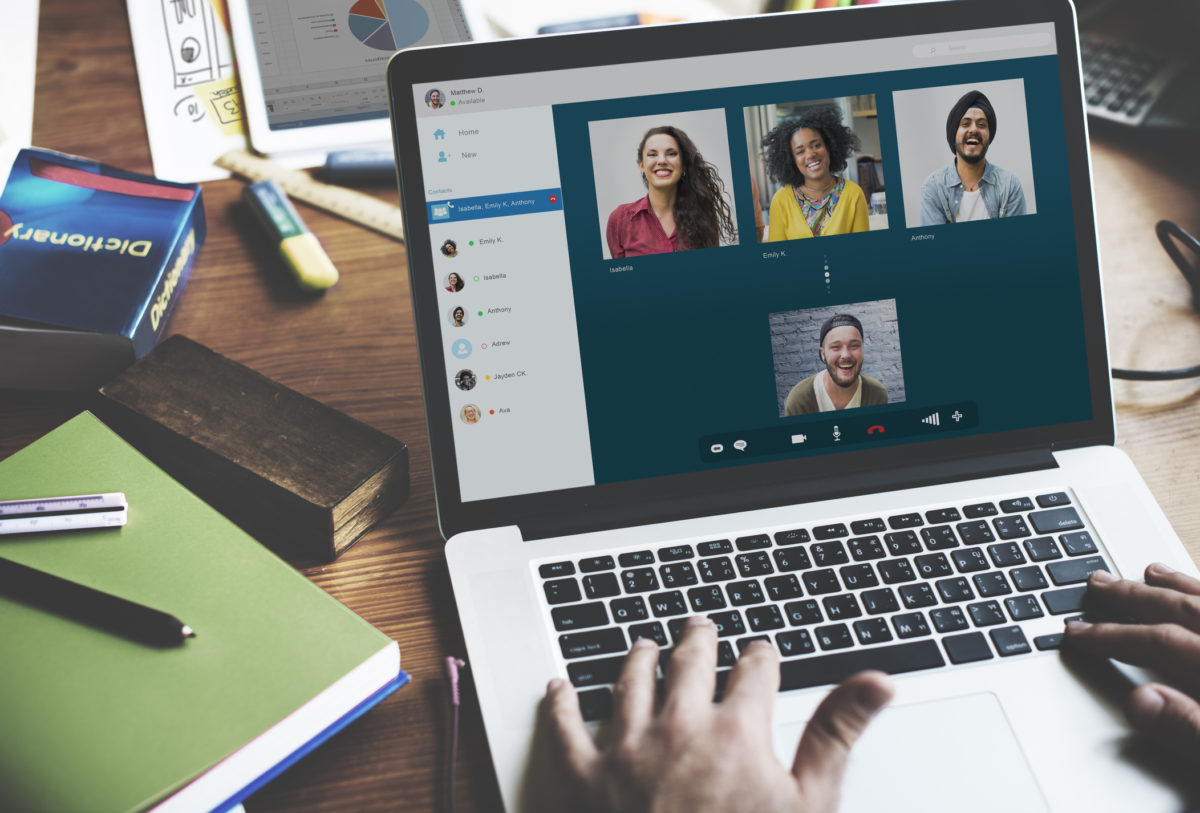Now that many of you are adapting to working from home and virtually managing team members has become a very necessary fact of life, we are offering some practical tips to lay the foundation for maintaining engaged, emotionally connected, and highly effective teams in a geographically diverse work environment.
I’ve worked from home for 20 years, both as president and chief growth officer of a marketing consulting firm and while I launched and grew my executive coaching and consulting business. Here’s what has worked for me, the teams I have led, and the clients I have served.
- Utilize a variety of communication platforms. Examples include: video conference (Zoom, Google Meet, GoToMeeting, Microsoft Teams, etc.), instant message (WhatsApp, Slack, Google Hangouts, etc.), text, email, phone. Quickly train your team members how to use new technology with tutorials, best practices, and troubleshooting guides.
- Prepare for efficient and effective virtual meetings by testing and troubleshooting your technology in advance and setting up the functionality you need to make video conference meetings productive and engaging (white boards, polling, small group break outs, etc.).
- Always have a technology back up plan and be sure everyone knows what that back up plan is in advance. This will minimize wasted time when you are convening meetings. For example, if video conference isn’t working, be ready to quickly move to a conference call by using instant messaging to quickly inform every one of the change.
- Schedule regular and consistent meetings. This will provide necessary structure, create a sense of normalcy, and keep team members engaged, informed and accountable. These may include daily huddles, update meetings, and group collaboration.
- When possible and appropriate, choose video conference over instant messaging and emails to keep everyone connected on a more personal level.
- Utilize and share virtual meeting best practices to ensure your team gatherings are energizing and highly productive. These include:
-
- Ground rules to ensure everyone is present and engaged (e.g., turn on your camera during video conferences, avoid talking over each other by using the chat or hand raise functions when you have something to ask or add)
- A clear and structured meeting agenda (Always a best practice!)
- Pre-read materials so everyone comes prepared
- Specified timeframes for topics and tasks
- If meetings are longer than an hour provide pre-determined breaks and longer breaks (20-30 minutes) to re-energize
- Put someone in charge of providing time checks and getting meetings back on track when they get off track
- Monitor the energy level of the group and make adjustments to the pace and approach as needed
- Be creative by utilizing imagery, short videos, music, short physical exercises and mindfulness techniques
- Integrate playfulness and humor as appropriate
- Ask for feedback about virtual meeting experiences and continually look for opportunities to improve them
-
- Create a professional work environment and encourage your team members to do the same.
-
- Design a dedicated and distraction-free workspace
- Establish regular working hours and routines
- Utilize workspace organization tools
- Stock up on office supplies
- Minimize clutter
-
- Maintain a professional image and presence by dressing for work and grooming as if you were going into the office. You will feel better and look better on video camera!
- When you need to be offline for a period of time, let your team members know when you are checking out and when you will be checking back in. No one should feel like they need to be tethered to their laptop.
- Communicate even more proactively and regularly to ensure clarity, alignment, and accountability.
- When conflict emerges, resolve it via phone or video conference, not text, instant message or email.
- Keep an emotional pulse check on your people with regular one-on-one check-ins by phone or video conference. Our country was already suffering from a loneliness epidemic long before the coronavirus pandemic.
- Schedule virtual coffees and lunches to sustain informal relations and to continue to build your professional network.
- Continue to acknowledge birthdays, anniversaries, achievements and successes. And consider starting meetings with the question, “What are you grateful for?”.
If this information is useful to you, feel free to share it with your team members and others who may value it. We’re all stronger when we support each other as we navigate this new way of working together.
Marci, my director of client services, and I have been remotely collaborating for seven years – four through our work together at IEG (including the “great recession” time period) and three through my business. If we can be of assistance to you as you’re adapting to an unfamiliar way of working and planning for the unexpected, please don’t hesitate to contact us.

